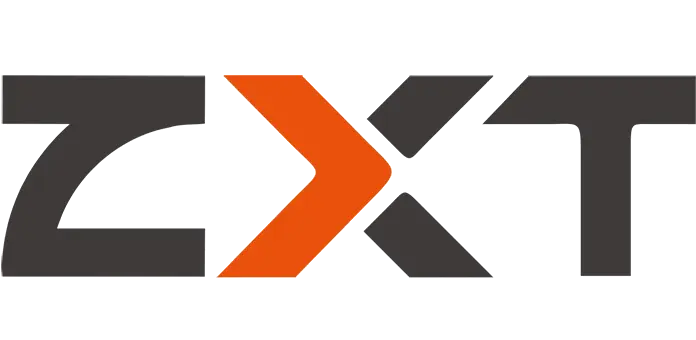Table of Contents
Abstract
Cutting machines are integral devices that help businesses and industries perform precise and accurate cuts on various materials such as paper, fabric, metals, and more. These machines come in different shapes, sizes, and types with features that cater to specific requirements. Selecting the right cutting machine is crucial for businesses to streamline and optimize their manufacturing processes. This blog post aims to explore the different types of cutting machines in the market and their suitable applications.
Different types of cutting machines come with varying specifications to cater to different business needs and manufacturing processes. Selecting the appropriate cutting machine can help businesses optimize their production processes, and save time and costs while ensuring quality cuts, and shapes are achieved. It’s important to carefully analyze your cutting requirements and the type of material you work with to determine the best-suited cutting machine for your business. With the variety of cutting machines available in the market, industries are guaranteed to find the perfect machine that meets their specific needs.
Main Types of Cutting Machines
Cutting machines are indispensable tools for a range of industrial applications, from aerospace to construction and manufacturing. Employing various mechanisms such as blades, lasers, waterjets, or plasma depending on the material being cut – ranging anywhere from wood to metal and paper fabric – these versatile machines can be operated manually or automatically by computer numerical control programming in order to ensure accuracy according to the level needed for each particular job.
- Laser cutting machines
- Waterjet cutting machines
- Plasma cutting machines
- Digital knife cutting machines
- Die cutting machines
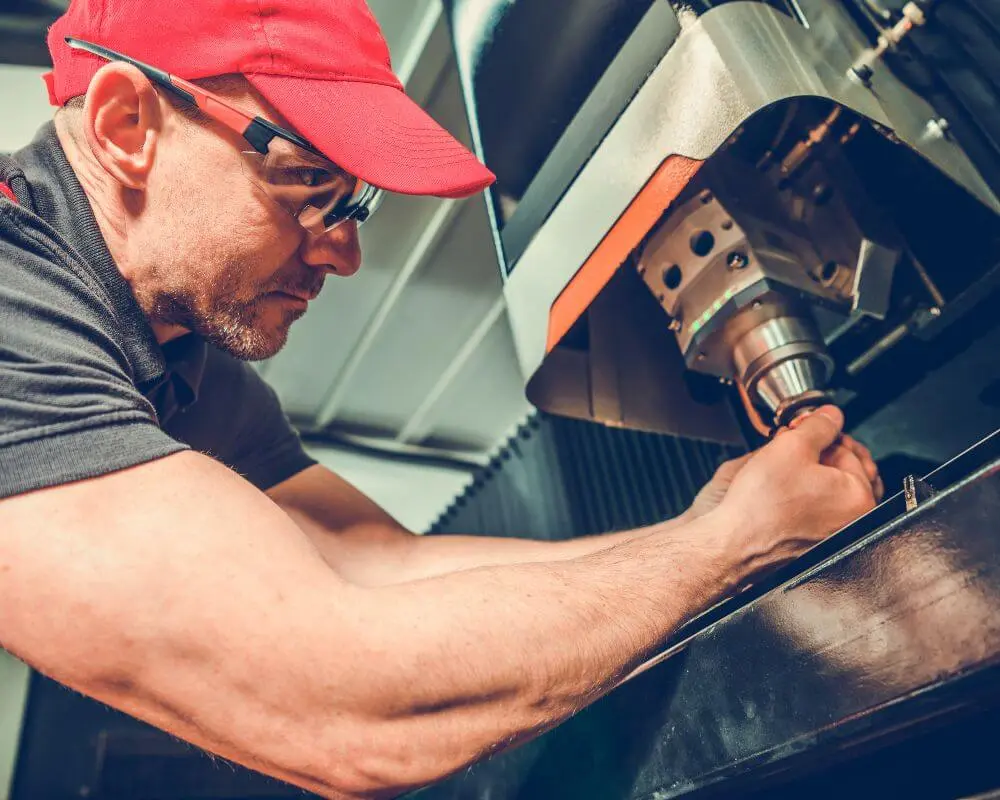
Laser Cutting Machines
A laser cutting machine is a piece of cutting-edge technology that uses a high-powered laser to vaporize, melt or burn through a workpiece to create a precise cut or engraving. The laser generates a beam of light that is focused through a lens onto the workpiece. This concentrated beam of light rapidly heats the material, and in the process, the material melts or vaporizes away, resulting in a precise and accurate cut or engraving.
How Does the Laser Cutting Machine Work?
The machine works by converting electrical energy into a high-powered, finely focused laser beam. The laser beam is created by exciting a gas mixture using an electrical discharge, a method known as gas discharge excitation. The laser beam then passes through a series of mirrors and lenses before being directed onto the workpiece. The beam’s spot size is around 0.1mm or less, which results in a precise cut that doesn’t damage the surrounding material. Additionally, the laser can be used to engrave or mark the material without cutting it all the way through.
Benefits of a Laser Cutting Machine
The advantages of using a laser cutting machine are numerous. Apart from the accuracy and precision of the cut, these machines are fast and efficient, resulting in high productivity levels. They are also very versatile, capable of cutting a wide range of materials, including plastic, metal, wood, and fabric. Since there is no physical contact between the cutting tool and the workpiece, the cutting process produces very little waste, and the cutting tools themselves last a long time. Laser cutting machines are also programmable, allowing complex shapes to be cut with ease and accuracy, saving time and money in the process.
Safety Precautions
Laser cutting machines can pose some risks if not used correctly. The machines generate high-powered laser beams that can cause eye damage if not appropriately shielded. The user must wear proper eye protection should they need to observe the cutting process. The material being processed may also produce harmful fumes or smoke, requiring proper ventilation or respiratory protection.
In a word, a laser cutting machine is a sophisticated piece of equipment that uses a high-powered laser beam to precisely cut materials. These machines are efficient, accurate and versatile, and have revolutionized the manufacturing industry. When using a laser cutting machine, keeping the user’s safety in mind is necessary. These machines are a valuable tool for many industries and provide a level of precision and detail not possible with traditional cutting methods.
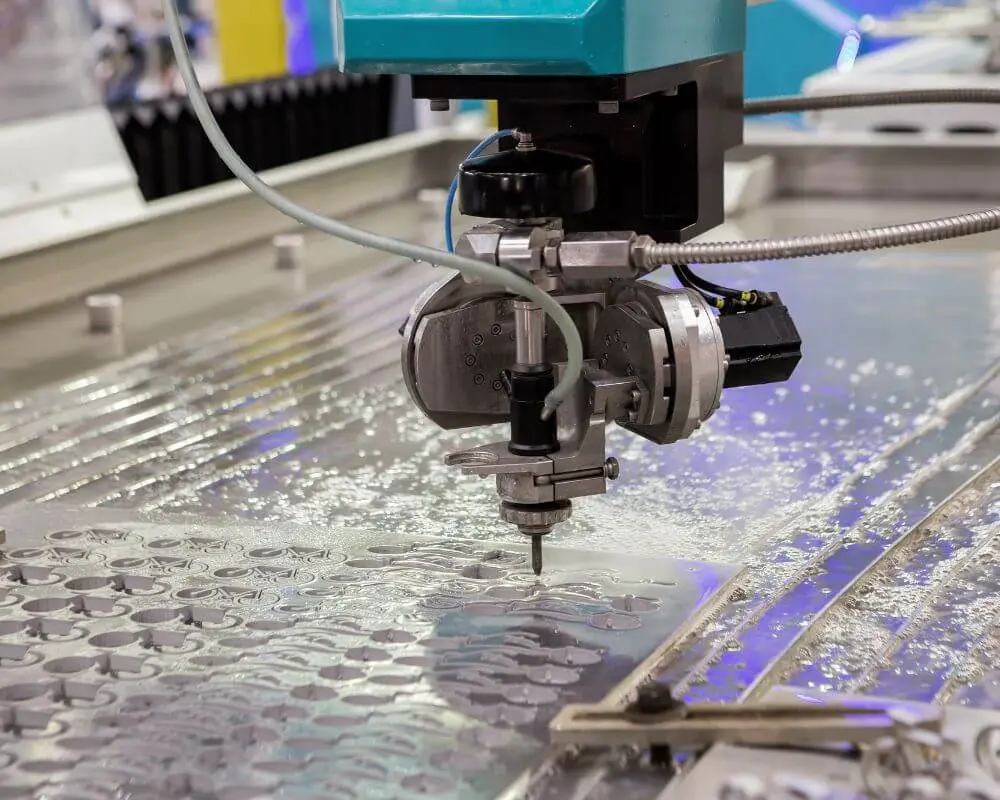
Waterjet Cutting Machines
A waterjet cutting machine is a type of industrial cutting tool that uses a high-pressure jet of water to cut through various materials such as metal, glass, stone, ceramics, and plastics. It’s a versatile cutting method that can handle materials of varying thicknesses, shapes, and sizes. The machine consists of a CNC-controlled cutting head that moves along the X-Y axis, generating the high-pressure water jet that cuts through the material. The waterjet cutting technology can perform precise cuts at high speeds without overheating the material, melting it, or distorting its shape.
How Does the Waterjet Cutting Machine Work?
The waterjet cutting process starts with the water pump that creates the high-pressure water stream. The stream is then concentrated through a sapphire or diamond orifice to the cutting head, where it’s mixed with abrasives such as garnet or aluminum oxide to increase its cutting power. The CNC controller guides the movement of the cutting head, which can make cuts in any direction with a high degree of accuracy. The waterjet cutting machine can produce intricate shapes, sharp corners, and small holes with minimal edge distortion, burr, or heat-affected zone.
Benefits of a Waterjet Cutting Machine
Waterjet cutting technology offers several advantages over other cutting methods. Firstly, it’s environmentally friendly since the cutting process uses only water and natural abrasive materials. Secondly, the waterjet cutting machine can cut through any material without creating heat-affected zones or chemical reactions, keeping the integrity of the material intact. Thirdly, the technology can achieve high cutting speeds and accuracy, minimizing production time and labor costs. Finally, the waterjet cutting process produces a clean cut, minimizing secondary processing steps such as sanding, grinding, or polishing.
Applications of Waterjet Cutting Machines
Waterjet cutting technology has a wide range of applications in various industries. For instance, it can be used to cut intricate designs and shapes in the aerospace industry, automotive industry, and marine industry. It’s also used in the manufacturing of electronics, medical devices, and architecture. The technology is also useful in cutting food products such as noodles, confectioneries, and fruits without altering their taste, texture, or shape. Additionally, waterjet cutting is ideal for cutting materials that are sensitive to heat or stress, such as glass, ceramics, and composites.
Maintenance and Safety of Waterjet Cutting Machines
Like other machines, waterjet cutting machines require regular maintenance to function optimally. The machine’s high-pressure pump requires regular oil changes, filter replacement, and seal inspection. The cutting head and orifice require cleaning to remove any debris or buildup that may affect the cutting process. Additionally, operators must observe safety protocols when using waterjet cutting technology. Safety glasses, hearing protection, and gloves are essential to protect operators from high-pressure water streams and abrasive materials.
In conclusion, waterjet cutting technology is gaining popularity in various industries due to its versatility, speed, and accuracy. The technology provides a clean, precise, and efficient cutting method that can handle materials of varying thicknesses, shapes, and sizes. Waterjet cutting machines are eco-friendly, produce minimal waste, and require minimal secondary processing. However, the technology is not without its limitations; it’s not ideal for cutting material thicknesses exceeding 150mm and may require additional support when cutting large or heavy workpieces. Nevertheless, waterjet cutting is a cost-effective and reliable cutting method suitable for numerous applications.
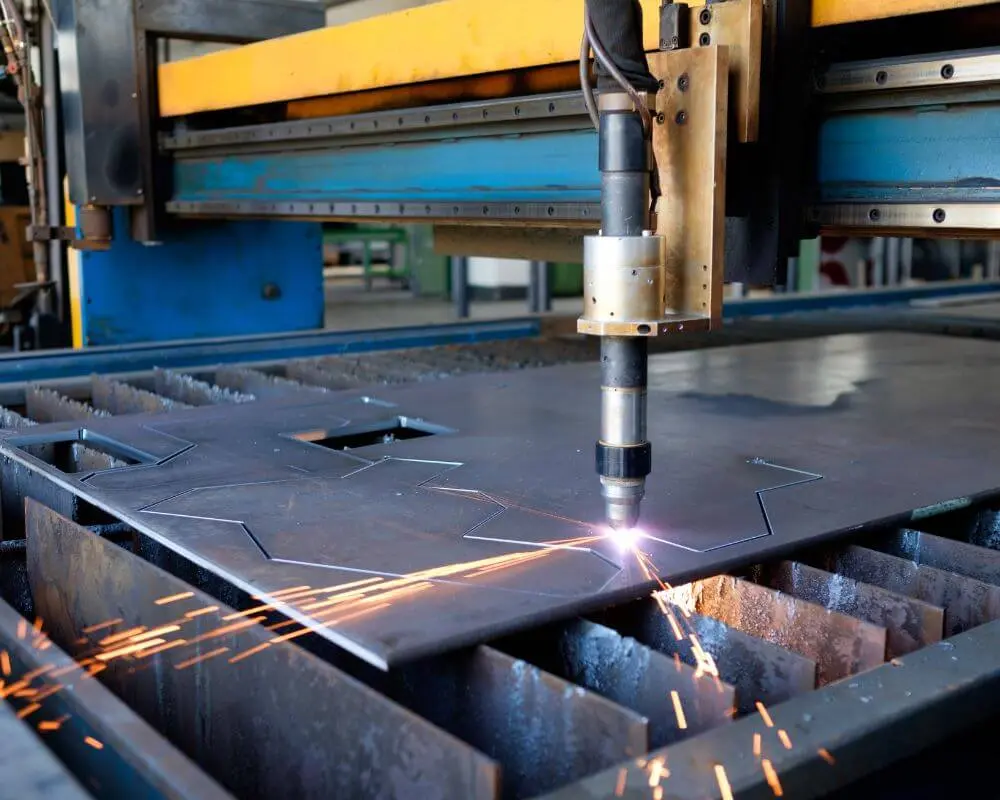
Plasma Cutting Machines
Plasma cutting is a process that has been around for years and is used to cut through the metal of different thicknesses with ease. A plasma cutting machine, also known as a plasma torch, is a tool that uses a high-velocity stream of ionized gas to cut materials. It is essential to understand how these machines work to better grasp their benefits and limitations.
How Does the Plasma Cutting Machine Work?
A plasma cutting machine uses an electric arc, which produces high-temperature plasma, to cut through metals. The machine first sends compressed air or inert gas, such as nitrogen or argon, through a nozzle while simultaneously introducing an electrical current to the gas. The electrical current ionizes the gas, turning it into plasma, and creates a small channel through which the rest of the gas can travel. The heat generated by the electrical arc melts the metal and the plasma blows away the molten metal to create a clean cut.
What Are the Benefits of Plasma Cutting Machines?
One of the biggest advantages of using a plasma cutting machine is that it can quickly and easily cut through a variety of metals, such as steel, aluminum, brass, and copper. They are also incredibly accurate thanks to their ability to create precise cuts, making them ideal for use in fabrication shops, car manufacturing plants, and various other industries. Furthermore, these machines can be used to make cuts at various angles, making them incredibly versatile.
What Are the Limitations of Plasma Cutting Machines?
Although plasma-cutting machines have many benefits, they also have some limitations. For example, these machines may not be the best choice for cutting thicker metals, as the plasma arc may not generate enough heat to melt the metal. Another limitation is that plasma-cutting machines produce a lot of heat and light, which can pose safety hazards.
How to Choose the Right Plasma Cutting Machine?
When choosing a plasma cutting machine, you need to consider several factors before making your decision. One crucial factor is the thickness of the metal you will be cutting regularly. You should also consider the size of the project you will be working on and whether you need a portable or stationary machine. Finally, you must consider the cost of the machine and any additional equipment, such as the power source and the air compressor.
What Are the Most Common Uses of Plasma Cutting Machines?
Plasma cutting machines have many applications and can be used in various industries. Some typical uses include cutting metal sheets for building materials, equipment repair, and maintenance, welding preparation, industrial manufacturing, and even artwork.
All in all, plasma cutting machines are incredibly versatile and can be used in many different industries. Used correctly, they provide accurate and precise cuts, making them a valuable asset to businesses looking to maximize their production efficiency. While these machines come with benefits and limitations, understanding their functionality and capabilities can help make purchasing the right one a lot easier.
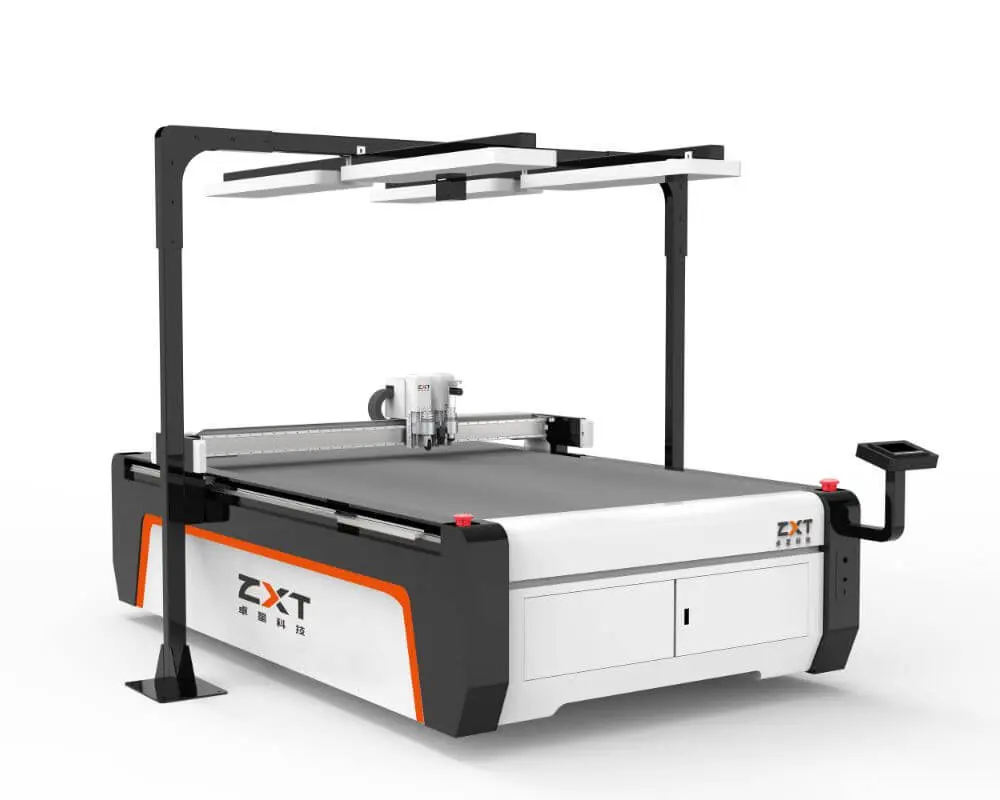
Digital Knife Cutting Machines
A digital knife cutting machine is programmed to cut materials using a digital file. It operates like a printer, but instead of printing on paper, it cuts through material with a specialized blade. The machine’s components include the blade, computer, and software. The software allows for precision cutting, and it can replicate specific cutting patterns. This technology is ideal for production runs with many components produced in large batches.
Applications of Digital Knife Cutting Machines
Digital knife cutting machines can be used to cut various materials with incredible precision. They can be used to cut soft materials like paper, cardboard, foam, and plastic or hard materials like metal and wood. Industries such as packaging, textiles, automotive, aerospace, and sign-making all rely on digital knife cutting machines. These machines provide accurate and fast cutting which leads to increased efficiency and productivity.
Advantages of Digital Knife Cutting Machines
Digital knife cutting machines have many benefits. Firstly, they cut precisely and consistently, making the process much faster and more accurate than manual cutting. Secondly, they reduce waste by optimizing the material used, and they also help to eliminate the need for secondary fabrication processes. In addition, digital knife cutting machines can streamline the manufacturing process, saving time and money.
Types of Digital Knife Cutting Machines
There are several types of digital knife cutting machines available in the market today. Some of the most common types include flatbed cutters, automated cutting machines, and CNC machines. Flatbed cutters use a flat bed to hold the material while a blade cuts it. Automated cutting machines, on the other hand, use robotic arms to hold the material in place while the blade cuts. CNC machines utilize a computerized system to control the blade’s movements. Each of these machines has its unique features and capabilities.
To conclude, digital knife cutting machines are an ideal solution for the manufacturing industry’s needs. They offer many advantages, including precision, consistency, and speed. They are also ideal for both soft and hard materials, which makes them versatile. With the different types of digital knife cutting machines available in the market, industries can choose the one that fulfills their specific requirements. Digital Knife Cutting Machines are the future of manufacturing and cutting, with technology continually evolving to provide even more precise solutions.
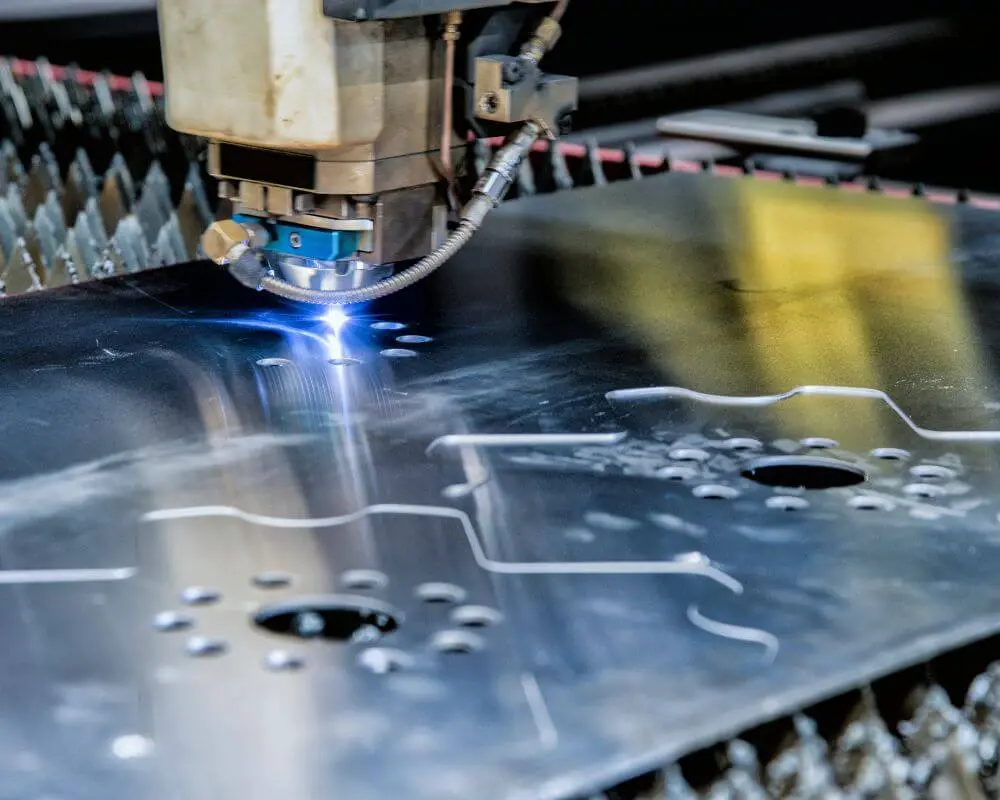
Die Cutting Machines
A digital die cutting machine is a device that uses electronic software to precisely cut designs on a variety of materials. It’s similar to a printer, but instead of printing out images, it cuts them out of paper, vinyl, fabric, or other materials. Digital die cutting machines come in various sizes, and different models will have specific cutting depths and materials they can cut. Popular brands of digital die cutting machines include Cricut, Silhouette, and Brother ScanNCut.
How Does a Die Cutting Machine Work?
First, you need to create your design using software such as Cricut Design Space or Silhouette Studio. You can create your own design or use pre-designed templates. Once your design is uploaded to the software, you can adjust the size, shape, and orientation. Next, you load the material you want to cut onto a cutting mat, which is then inserted into the digital die cutting machine. The machine will read the design from the software and cut the material accordingly. Once the cutting process is complete, you simply remove the material from the cutting mat
What can you do with a Die Cutting Machine?
The possibilities are endless! You can create custom stickers, labels, invitations, greeting cards, scrapbook pages, home décor, and even clothing designs. You can cut out intricate designs, text, and shapes that would be difficult or impossible to do by hand. Digital die cutting machines can also be used for personalizing gifts, creating party favors, making stencils or patterns, and more.
Why do you need a Digital Die Cutting Machine?
A digital die cutting machine can save you time and money, while also allowing you to create truly unique and personalized projects. Instead of buying pre-made items, you can create your own custom designs. You’ll also have the flexibility to adjust the size, shape, and color of your designs. A digital die cutting machine is also much faster and more precise than cutting by hand, which will save you time and frustration. Whether you’re a professional crafter or just starting out, a digital die cutting machine is a valuable tool for any DIY project.
To sum up, digital die cutting machines are an essential tool for any crafter, DIY enthusiast, or small business owner. They allow you to create unique and personalized projects, save time and money, and add a professional touch to your work. If you’re interested in getting started with a digital die cutting machine, do your research and find a model that is suitable for your needs and budget. With so many possibilities at your fingertips, you’ll be able to take your creativity to the next level.
Conclusion
In conclusion, choosing the right cutting machine for your needs is of vital importance for achieving the desired results. Different types of machines are suitable for particular cutting tasks, so it is important to understand your own requirements and do research on the best-suited machine. Industry associations, trade shows, magazines, and online resources are all excellent sources of information when researching cutting machines. Ultimately, by having a good understanding of the basics of automated or machined cutting tools, as well as staying up to date on the latest trends and advancements in the industry, you will be able to make an informed decision when selecting the perfect machine for your needs. As with any major purchase decision, be sure to take your time in making a considered choice based on careful research – this way you can ensure you’ll find exactly what you need for now and the future.
